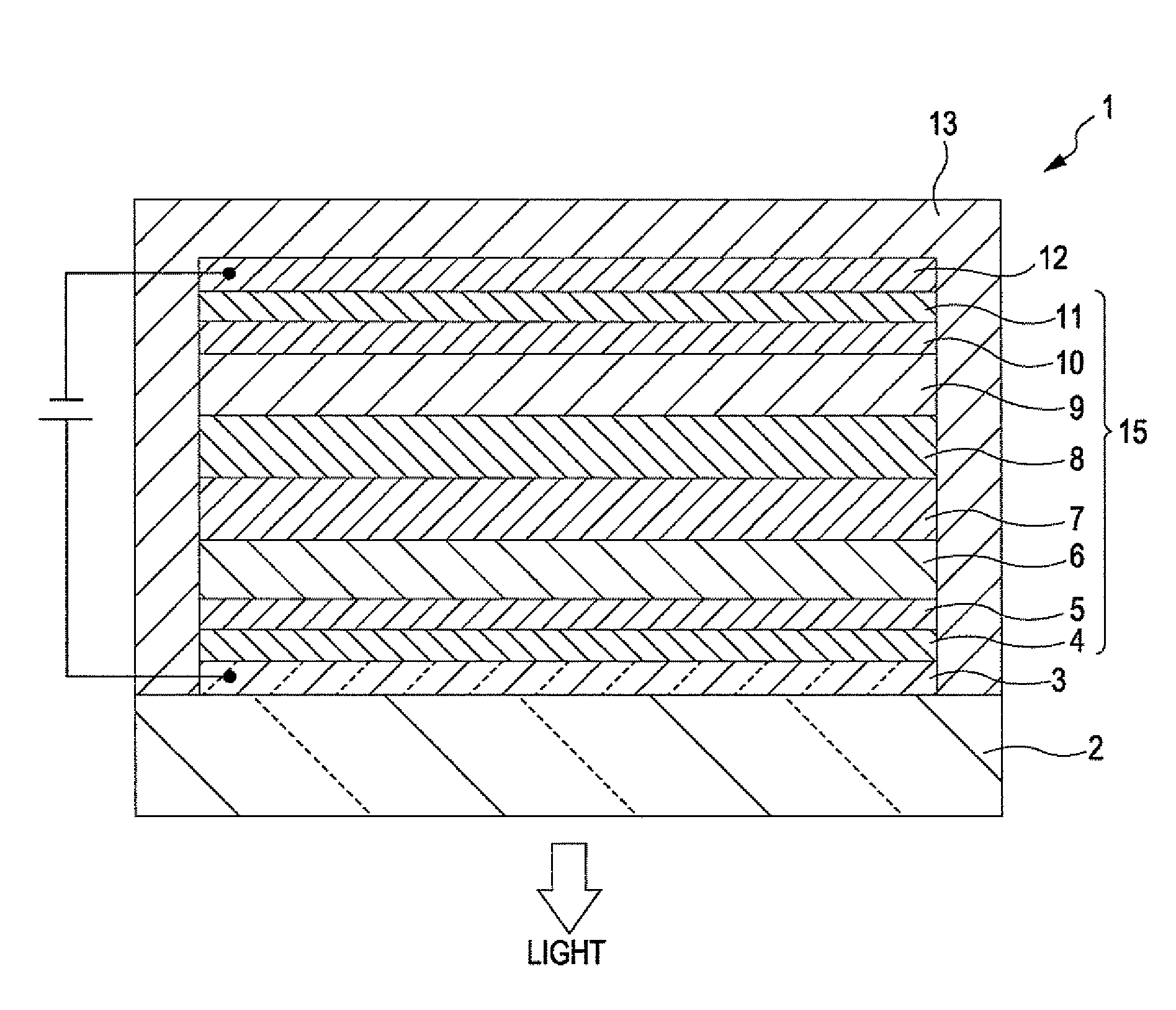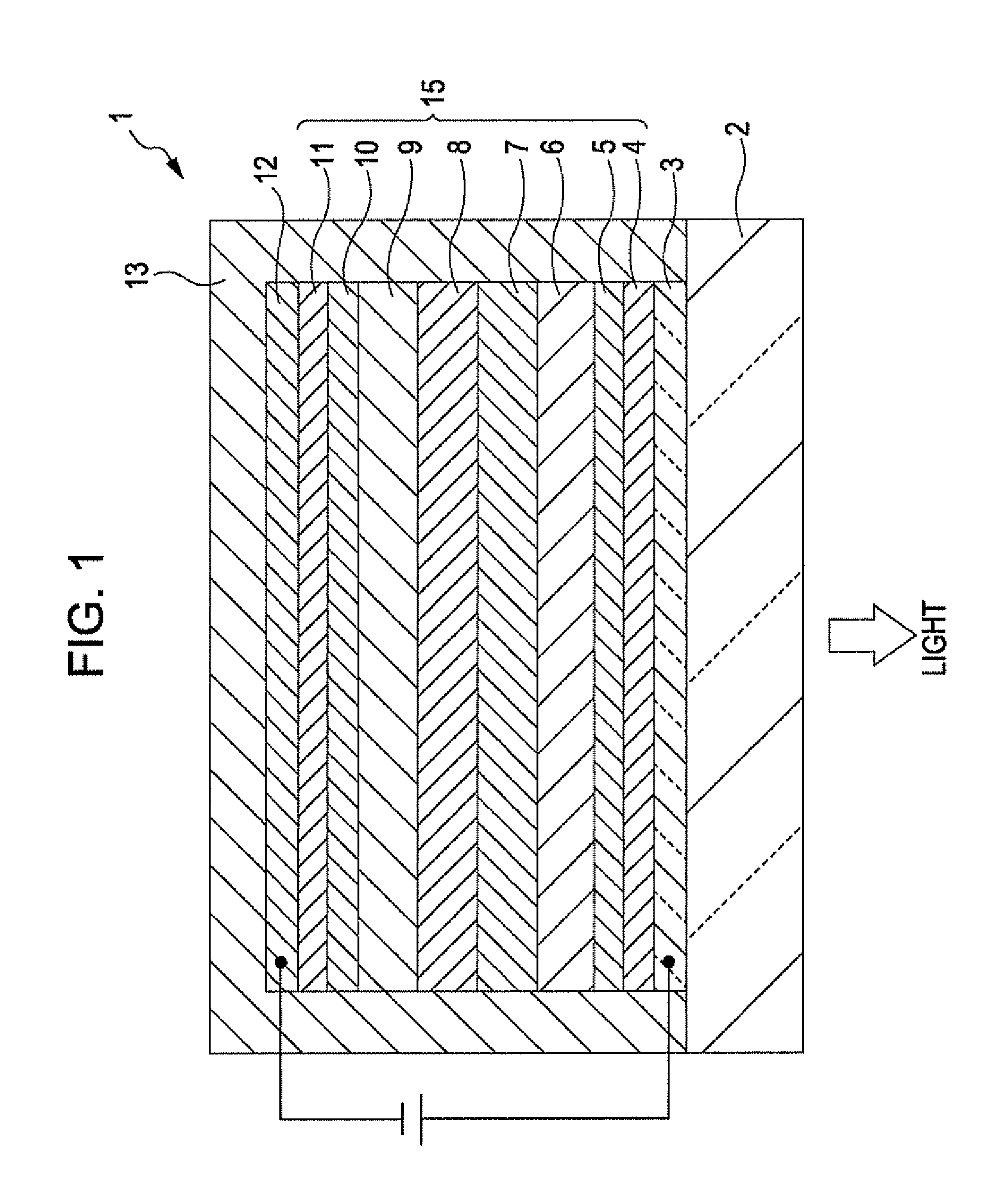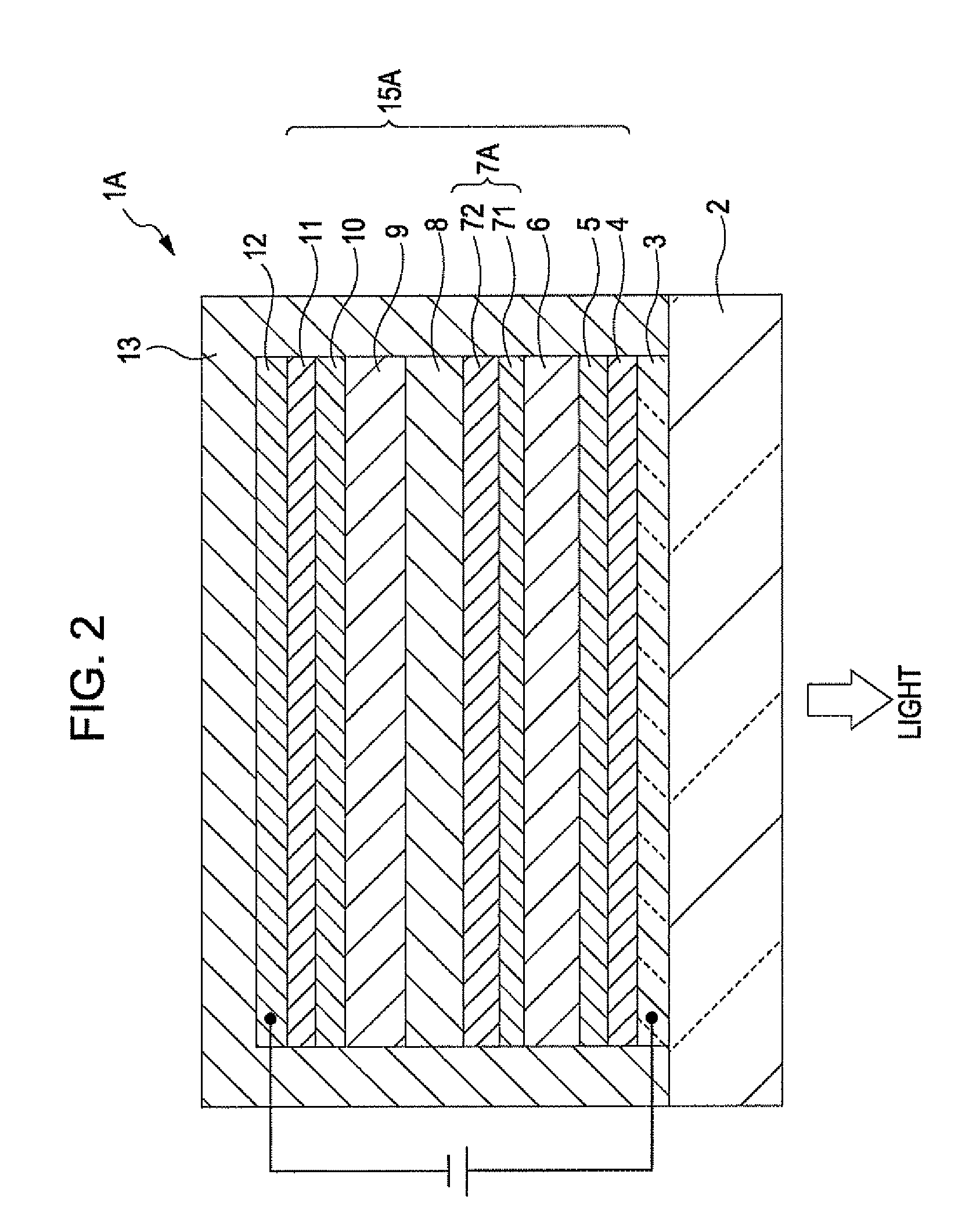Light-emitting element, light-emitting apparatus, display apparatus, and electronic device
a technology of light-emitting elements and display devices, which is applied in the direction of discharge tubes/lamp details, discharge tubes luminescnet screens, electric discharge lamps, etc., can solve the problems of low contrast, loss of balance, and undesired colors in display devices that include this light-emitting element, and achieve high-contrast images
- Summary
- Abstract
- Description
- Claims
- Application Information
AI Technical Summary
Benefits of technology
Problems solved by technology
Method used
Image
Examples
first embodiment
[0046]FIG. 1 is a schematic longitudinal sectional view of a light-emitting element according to a first embodiment of the invention. For convenience of explanation, the top and bottom in FIG. 1 are considered as the “top” and “bottom” of the light-emitting element, respectively.
[0047]A light-emitting element (electroluminescent element) 1 illustrated in FIG. 1 emits white light composed of red (R), green (G), and blue (B) light.
[0048]The light-emitting element 1 includes an anode 3, a hole-injection layer 4, a hole-transport layer 5, a red-light-emitting layer (a first light-emitting layer) 6, an intermediate layer 7, a blue-light-emitting layer (a second light-emitting layer) 8, a green-light-emitting layer (a third light-emitting layer) 9, an electron-transfer layer 10, an electron-injection layer 11, and a cathode 12 layered in this order.
[0049]In other words, the light-emitting element 1 includes a laminate 15 between two electrodes (the anode 3 and the cathode 12). The laminat...
second embodiment
[0180]A second embodiment according to the invention will be described below.
[0181]FIG. 2 is a schematic longitudinal sectional view of a light-emitting element according to a second embodiment of the invention. For convenience of explanation, the top and bottom in FIG. 2 are considered as the “top” and “bottom” of the light-emitting element, respectively.
[0182]A light-emitting element according to the present embodiment is the same as the light-emitting element according to the first embodiment except that the intermediate layer has a different structure.
[0183]The following description relates to the light-emitting element according to the second embodiment and is focused on points of difference from the light-emitting element according to the first embodiment. Thus, their similarities will not be further described.
[0184]A light-emitting element 1A according to the present embodiment includes an intermediate layer 7A between and in contact with the red-light-emitting layer 6 and th...
example 1
[0236](1) First, a transparent glass substrate having an average thickness of 0.5 mm was prepared. An ITO electrode (anode) having an average thickness of 100 nm was formed on the substrate by sputtering.
[0237]The substrate was immersed in acetone and then in 2-propanol and was subjected to ultrasonic cleaning and subsequent oxygen plasma treatment.
(2) A compound having the formula 7 was deposited on the ITO electrode by vacuum evaporation to form a hole-injection layer having an average thickness of 50 nm.
(3) A compound having the formula 16 (a first material) was deposited on the hole-injection layer by vacuum evaporation to form a hole-transport layer having an average thickness of 20 nm.
(4) The material for a red-light-emitting layer was deposited on the hole-transport layer by vacuum evaporation to form a red-light-emitting layer (a first light-emitting layer) having an average thickness of 10 nm. The material for a red-light-emitting layer contained a compound having the formu...
PUM
 Login to View More
Login to View More Abstract
Description
Claims
Application Information
 Login to View More
Login to View More - R&D
- Intellectual Property
- Life Sciences
- Materials
- Tech Scout
- Unparalleled Data Quality
- Higher Quality Content
- 60% Fewer Hallucinations
Browse by: Latest US Patents, China's latest patents, Technical Efficacy Thesaurus, Application Domain, Technology Topic, Popular Technical Reports.
© 2025 PatSnap. All rights reserved.Legal|Privacy policy|Modern Slavery Act Transparency Statement|Sitemap|About US| Contact US: help@patsnap.com



